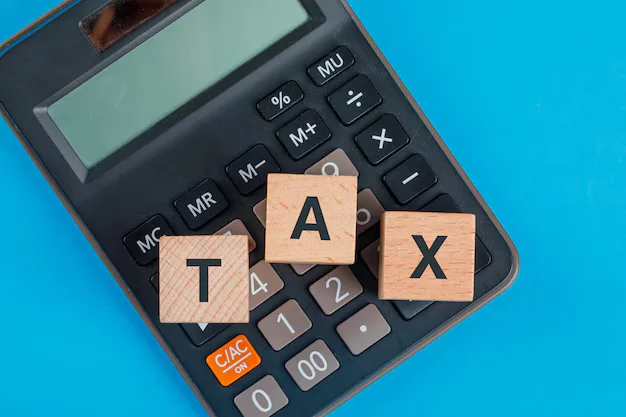


Tax brackets can seem like a burdensome social responsibility, especially when you get a raise. For people who are unclear on how it works in the United States, extra income could mean over taxation. However, because the United States operates a federal income tax system, tax brackets and federal income rules are not as daunting as you might think.

A Tax bracket is a range within the federal income tax system for taxing taxable income increases according to increments in your earning, following a progressive sequence. Essentially, the government taxes you per fractional dollar increment for the group or range of taxable income. In other words, different portions of your income incur taxation differently.
While a higher total income might place you in the highest tax bracket, only the income that surpasses the income thresholds within that bracket is taxed at the higher rate, not your entire income. A tax bracket is a range of incomes that are taxed at a specific rate.
Tax brackets and federal income tax rates are components of the federal income tax system, designed so that taxpayers in the lower tax bracket or Low-income taxpayers pay less, whereas those in higher brackets, like those married filing jointly, pay more. There are seven federal tax bands for tax years 2022 and 2023, with rates ranging from 10% to 37%.
The United States has a progressive tax system, which means that taxes are calculated using a marginal tax rate. A marginal tax rate is the amount of tax paid on a dollar of increased income that moves a taxpayer into a higher tax band. The marginal tax rate grows in lockstep with a taxpayer's income.
To put it another way, taxpayers will pay the lowest tax rate on the first "bracket" or level of taxable income, a higher rate on the following level, and so on. Every year, the Internal Revenue Service (IRS) publishes changes to 2024 tax brackets, tax rates, and other adjustments relevant to tax planning. There are seven federal income tax brackets for the tax years 2022 and 2023, indicating the federal tax rates applied to different income tax brackets.
Each bracket has a distinct federal income tax rate, ranging from 10% to 37%, and covers different ranges of ordinary income for tax filing status considerations. For single taxpayers, married joint filers (including qualifying widow\ [er]s), married filing separately filers, and head of household filers, the dollar ranges in each bracket differ.
Before identifying their marginal tax bracket, a taxpayer should first compute their taxable income to determine potential tax deductions and applicable income tax rates, which includes earned and investment income less adjustments and deductions.

The total amount of taxes owed is computed by combining tax brackets and tax rates. However, while they may sound similar, they are in fact very different. A tax rate is a proportion of income that is taxed, whereas a tax bracket is a range of income that is taxed at a particular rate. These rates, forming part of the federal income tax rates, are structured as 10%, 12%, 22%, or higher depending on the taxpayer's earnings and tax filing status.
Most taxpayers, with the exception of those who just pay the minimum tax, have income that is taxed progressively. This means that their earnings are taxed at numerous rates in addition to the nominal rate of their tax bracket. For tax years 2022 and 2023, V. However, this doesn't mean the entire $100,000 would be taxed at 24%.
The tax is applied progressively; different portions of their income will be taxed at the various rates from lower brackets before the remaining income gets taxed at the 24% rate. As a result, a taxpayer eventually pays less than they would if the complete income was taxed at 24%. As a result, a taxpayer's tax bracket does not always represent the percentage of their guaranteed income that will be paid in taxes. It is a tax rate.
According to the IRS, there are currently seven tax brackets: 10, 12, 22, 24, 32, 35, and 37 percent, with progressively varying rates. Also, other factors besides your taxable income influence your tax bracket; your filing status, time of filing, and yearly economic policy. For example, we consider a single filer for the 2020 tax bracket, which is due in April 2021. Here is what the tax bracket will look like according to the IRS announcement of tax inflation adjustments for the tax year 2021 .
As stated earlier, the IRS recognizes five categories of filing status that influence your tax bracket. Here are five of them and the class of individuals that constitute each filing status.
They include all single (unmarried), legally separated, and divorced people falling into the tax rate single filers category
They are a married couple that decides to file jointly by combining their incomes and deducting their expenses, typically achieving a lower tax bracket.
They are a married couple who opt for married filing separately status to keep one income lower, especially beneficial for managing tax obligations when under an income repayment plan.
This Head of Household Filing status involves a person who files on behalf of a set of unmarried people legally living together and has paid more than half the cost for the year, potentially moving into the lowest tax bracket.
It involves a married couple who initially filled jointly until the sudden death of a spouse.

There are several online sites available to provide tax advice and assist you in determining your precise federal income tax bracket. The IRS provides a variety of information, including annual tax tables with extremely detailed tax filing statuses in increments of $50 of taxable income up to $100,000.
Other websites offer tax bracket calculators, which will do the math for you if you know your filing status and taxable income. Because your tax bracket can change from year to year due to inflation adjustments and changes in your income and status, it's important to check on an annual basis.
The federal tax brackets are a set of formulas that the federal government uses to calculate how much you pay taxes according to how your income rises. Many misunderstand that being in a higher tax bracket means all their income is taxed at that highest tax rate, not realizing the effective tax rate is actually applied progressively.
For example, if you are single and earn $50,000, you are in the 22% tax bracket. However, you do not pay the complete 22% on your taxable income. Essentially, your effective tax rate is calculated progressively from the smallest percentage stepwise across the federal tax brackets, ensuring that as your income tax return reflects accurate financial education.
As an employee, reviewing your w-2 form helps you understand your average tax rate and the amount of tax withheld, crucial for preparing your income tax return. Similarly, a 1099 form helps with tax filing for the self-employed and independent contractors for non-employment income.
In addition, whether you are an employee or self-employed, if you understand the calculation, you can figure out your tax bracket before filing. That way, you can easily plan your finances without owing the IRS and getting subjected to a tax audit .
Here is a practical/mathematical example to explain the calculation for figuring out tax brackets. Assuming you are a single filer who earns $50,000, and we use the IRS announcement for tax inflation for the tax year 2021, here is how to calculate your tax bill.
A tax rate of 10% gives us 10% X $9,875= $987.5
A tax rate of 12% gives us $40,125 minus $9,876 = $30,249. Therefore 12% X $30, 249= $3,629.88
A tax rate of 22% gives us $50, 000 minus $40, 126= $9, 874. Therefore 22% X $9, 874= $2, 172.28. The total tax bill for your tax bracket calculated progressively is the tax rates per tax bracket. In this calculation, the correct total should be $987.5 + $3,629.88 + $2,172.28 = $6,789.66.

While the pros and cons of the progressive tax system remain debatable, proponents of the tax brackets continue to espouse a few benefits of tax brackets. Here are three of them.
Tax brackets are a tool for the IRS and provide an easy way to classify a person’s earnings. The higher your earning , the higher your tax bracket. However, each raise in your income can move you over to the next tax bracket, but only the additional income is taxed at the higher rate.
Your income up to the threshold of each bracket is taxed at the same tax rate applicable to that income range, ensuring fairness in your tax situation. It means that each raise in your income can move you over to the next tax bracket. However, you only owe the IRS a percentage of the extra earning rather than the entire earning.